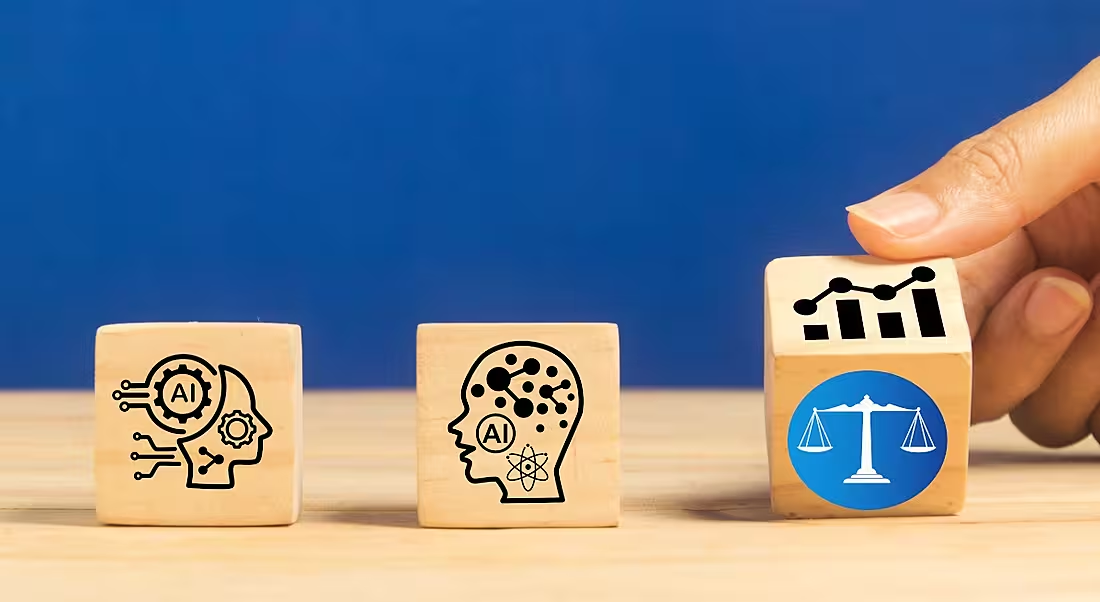AI has somewhat of a negative connotation when the topic of future job security is brought up, however, some believe it is creating a culture of accessibility for employees who are all too often marginalised in the workplace.
Figures from the World Health Organization show that around 1.3bn people, or 16pc of the global population, are living with some form of a disability. While not everyone is going to be in a position to take on full- or part-time work, arguably more needs to be done to enable people with disabilities to not only enter the workforce, but thrive within it.
AI, for all of its faults, has the power to make the working world accessible to those who, even when they have find employment, may struggle to excel due to an inaccessible workplace that does not take human differences into account. More and more, we are seeing companies employ chief AI officers, as the workplace gradually adopts transformative AI technologies that work with people, not replace them.
Hiren Shukla, a global neurodiversity and inclusive value leader for EY, is a self-described multicultural person, who often didn’t seem to fit the particular mould. Earlier in his career, he was excited by an ‘aha moment’ in which he realised that organisations have an invisible dimension of cognitive diversity that naturally leans towards creativity, pattern recognition, hyper-focus and very strong acumen, with aptitude for data and emerging tech.
“All of this innovation capacity was being underutilised,” he told SiliconRepublic.com. “And the opportunity to lean into unique employee populations that have a different life experience than most, was a pathway towards building multifaceted value for organisations, their customers and society.”
Reimagining the working world
Whether it is in relation to gender, race, religion, age, sexual orientation or disability, research suggests that diversity in the workforce cultivates an environment of trust, wherein innovation, talent retention and reputation are all positively improved. Certainly, it stands to reason that a homogenous workplace would lack creativity and the encouragement to think outside of the box.
“GenAI is transforming every industry, every job and almost every customer experience. Success will depend on workforce reskilling and the ability to create new ways of working that will effectively create a new combination of organisational intelligence, [where] humans at the centre with GenAI are support partners,” explained Shukla.
He is of the opinion that GenAI has the potential to drive inclusion for employees with disabilities, empowering all members of the workforce to tackle some of the world’s biggest problems, for example the climate crisis, world hunger and global inequality, among others.
It is a unique opportunity to transform the ways in which we work using tech, from assistive technology, processes and the measures and metrics that dictate how the future workforce can adapt to drive accessibility for people with visible and non-visible disabilities. “This is the opportunity to accomplish more around accessibility than ever before,” he said.
“GenAI’s capabilities level the playing field for individuals where there is cognitive overload, where grammar and syntax interfere with clear message articulation and where ideation is so vast that a reconciliation of those ideas into a structured manner is needed.”
Barriers to workplace AI
Eoin O’Reilly, the head of AI and data at EY Ireland, also sees the potential of AI to transform the workplace for people with individual needs, however, he noted there are several barriers yet to be overcome.
“For businesses, GenAI offers the potential to be embedded across many aspects of operations. However, security concerns and the potential use of company-sensitive data to ‘train’ an AI model can be stumbling blocks for many companies,” said O’Reilly.
The accuracy and quality of AI is another major concern for organisations, especially those that depend on the availability of clear and transparent data. For O’Reilly, this is why organisations should view GenAI as a co-pilot – there to augment human potential, not supersede it.
“GenAI and large language models offer incredible potential by supporting ideation and research, boosting productivity, automating repetitive tasks and much more, freeing up time for employees to focus on more productive and higher value tasks and most crucially, enabling more human interactions.”
AI in the workplace has come under significant scrutiny, with many putting forth the argument that we don’t yet understand the full extent of what it is capable of, nor do we have advanced enough safeguards to prevent against inherent biases. “Ethical practices and transparency are of paramount importance as organisations move to integrate AI into the fabric of their business operations,” said O’Reilly.
“Deployment of AI technologies should not only be innovative but also ethical and sustainable. Ensuring privacy, understanding and mitigating any risks and the consistently responsible use of AI systems is essential”.
He also adds that companies need to adhere to the rules set out under the EU AI Act so that the many benefits of AI can be realised while still protecting fundamental rights and user safety.
Don’t miss out on the knowledge you need to succeed. Sign up for the Daily Brief, Silicon Republic’s digest of need-to-know sci-tech news.




